What is a ham?
A ham is the rear leg of pork, all the way from the shank to the rump. It is usually cured, which means it is preserved with sugar, salt, nitrates and/or smoke. Often, when you head to the grocery store or butcher to purchase a ham you just get what you’re offered, but it’s great if you know a little bit about what you’re looking for so that you can make an informed decision if given the chance. Read on to learn more about hams.
Types of Ham
There are generally three types of ham that you can buy. The first, and most common, is called a city ham. City ham is cured in saltwater for several days or weeks and then smoked. It is fully cooked and all you have to do when you get it home is re-heat it properly. The second type of ham is called a country ham. Country hams are dry-rubbed and then air-dried or cured for months. Some country hams are smoked and others are not, but they are all uncooked and you will need to cook them fully at home before serving. The last type of ham is a fresh ham. Fresh hams are completely raw and you can either roast it just as you would for any regular pork roast or you can cure it yourself.
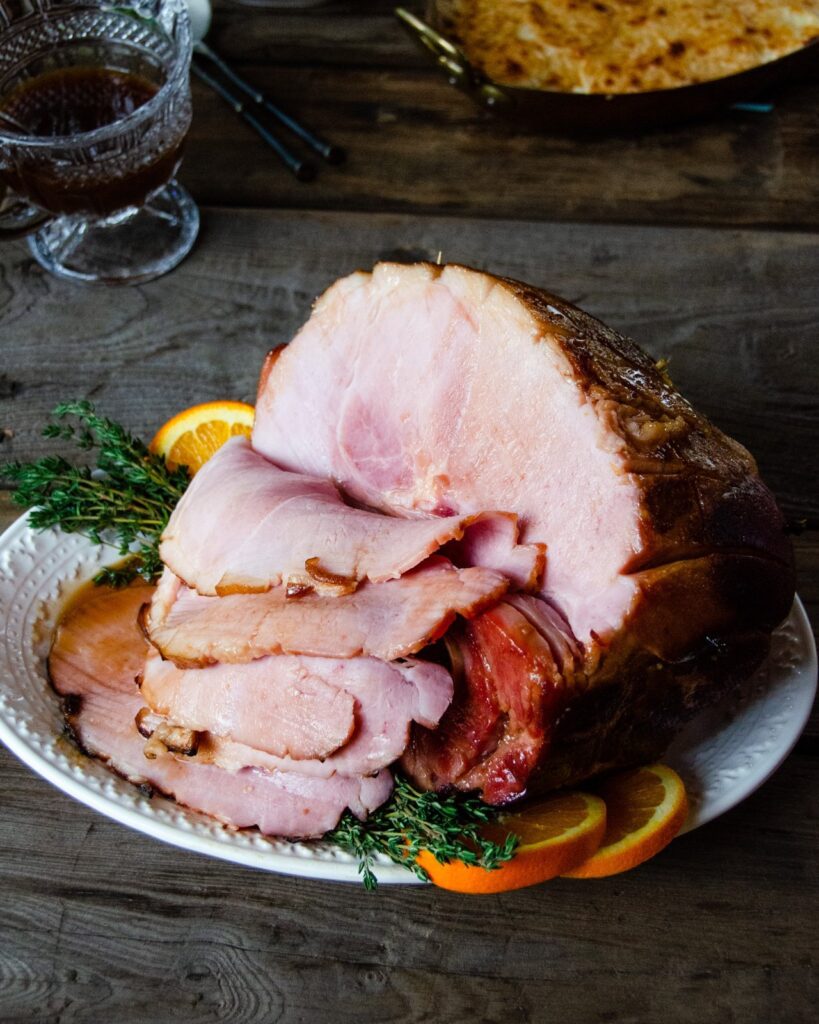
Cuts of Ham
Once you’ve determined what type of ham you are going to get, you might have the chance to pick the cut of ham. Ham comes in one of two different cuts – the shank end or the butt end. Each one has its benefits. The shank end of ham, obviously the end closest to the hoof, tends to be less tender, has more fat and is easier to carve because there’s only one single bone to deal with. The butt or sirloin end of ham is more tender, has less fat, but is harder to carve because the aitchbone (pelvic bone) is still intact and you’ll have to cut around it. Both shank and butt ends of ham can come whole or spiral cut. Spiral cut hams are obviously very easy to carve, but it is easier to dry out a spiral cut ham than a whole ham.
How to Pick a Ham
There are few things to look for when you’re picking your ham out of a lineup.
1. Water content. Look for a ham with as little water content as possible. You’ll read about this on the label.
-
- “Ham” means no added water.
- “Ham with Natural Juice” means 7 – 8 % of the total is water weight.
- “Ham, water added” means as much as 10% is water weight.
- “Ham and water product” means any amount of the total weight is made of water, probably over 10%.
2. Color. A good ham should have an even rosy color. It doesn’t necessarily matter if the hue is light or dark, but it should be even. A darker pink color could mean a muscular, free-ranging pig OR could mean heavier smoke flavor.
3. Fat content. Fat is a good thing – it means the pork will be tender and flavorful. Check for streaks of fat and marbling between the muscles.
4. Smoke. Smoke flavor can come from physically smoking the meat, or it can be added artificially with smoke flavor. Physical smoking is more desirable, so check to make sure the label mentions smoking instead of listing “smoke” as an ingredient.
5. Hormones. Finally, look to make sure the pork is free of hormones.
Boneless versus Bone-In Ham
Whether you choose a boneless or bone-in ham really comes down to personal preference, but I prefer a bone-in ham. Bone-in hams have more flavor and although they are more difficult to carve, they make a better presentation on a table. Boneless hams have had the leg bone removed and the muscle is pressed together. This makes the ham easy to slice, but you’ll sacrifice flavor and the ham will have a somewhat unnatural shape.
How Much Ham per Person?
When determining what size ham you need, plan on the following weights:
- Bone-In Ham: ½ to ¾ pound per person
- Boneless Ham: ½ pound per person (or less)
Of course, you might want to plan on having left-over ham, so keep that in mind too when picking the right size for you.
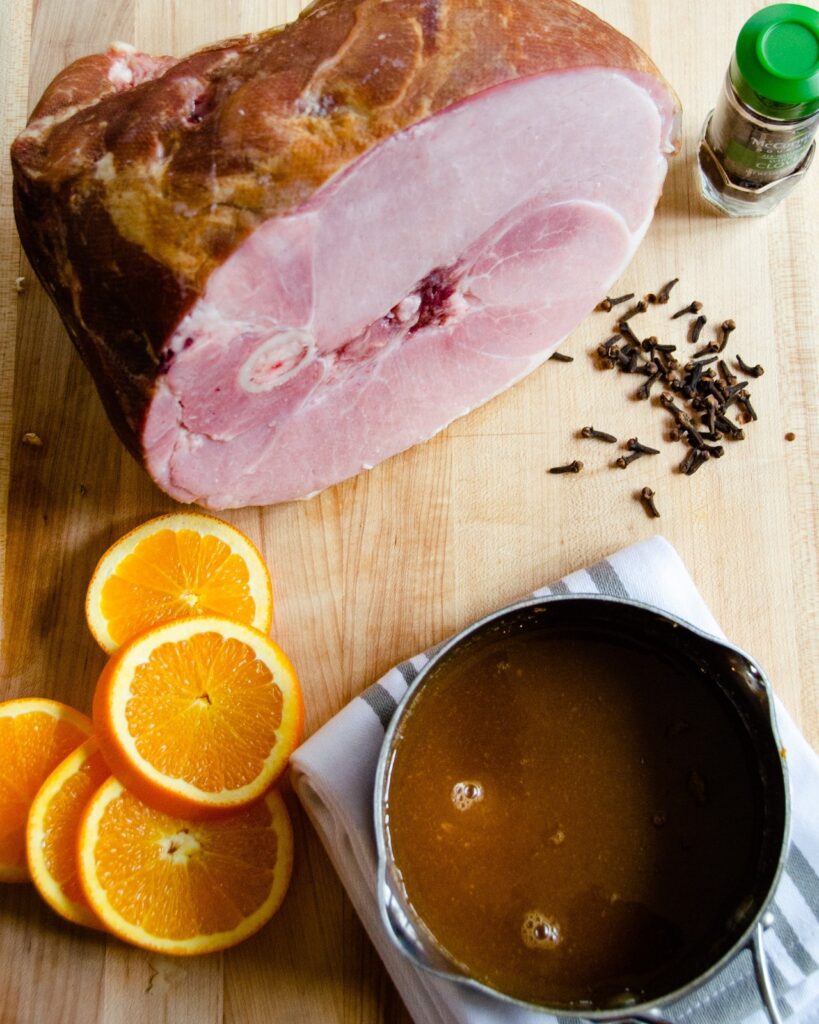
How to Prepare Ham
The goal in preparing a ham is to re-heat it to the right temperature without drying it out. Every step in the cooking process keeps moisture in mind.
The first step in preparing your ham is to score the fat or top of the ham. Use a sharp knife to make a criss-cross design in the fat, trying not to slice into the flesh of the ham. This scoring step helps the fat to render as it cooks and allows the fat to open naturally as it shrinks in the oven. If you don’t score the fat, the cap of the ham will squeeze the ham as it cooks and shrinks, forcing precious moisture out of the ham. We don’t want that! Scoring helps keep the fat moist and flavorful, plus it gives the ham a pretty design with crispier fat on top.
Next, place the ham in a roasting pan or baking dish. Pouring a glaze over the ham moistens the ham and also provides juices to the roasting pan that you can baste over the ham as it cooks.
It is optional, but attaching fruit to the surface of the ham also helps to trap moisture in the ham. Use cloves as nails to nail apricots, pineapple or orange slices to the ham. This also adds nice flavor.
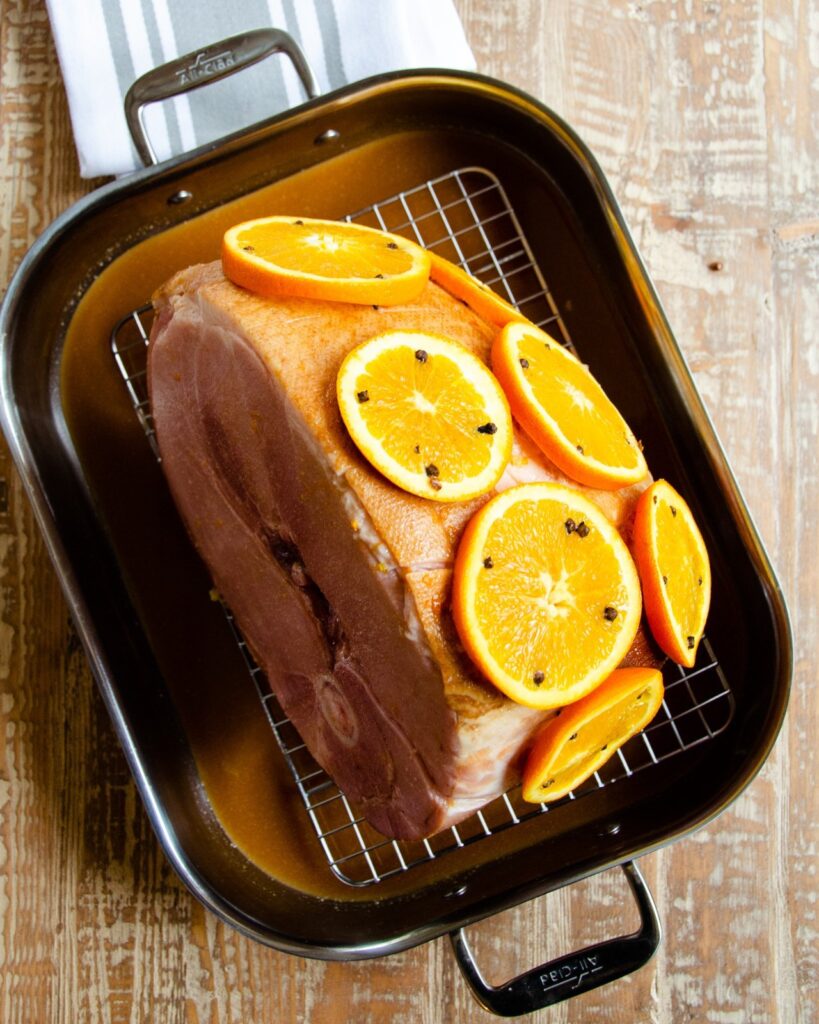
Use an instant read thermometer to check for doneness and try to get the ham to as close to 140ºF as possible without going over. There are three ways you can do this. The first is in a 350ºF oven. It should take about 10 to 13 minutes per pound to get the ham to 140ºF. You can also achieve this with a slow cooker, cooking on low for 8 to 10 hours with at least 1 cup of liquid in the pot. The most fool-proof method of achieving a moist ham, however, is in the pressure cooker (or Instant Pot®). Make sure the ham will fit into your pressure cooker and then cook on HIGH for about 25 minutes and let the pressure drop naturally. This could take as long as another 15 minutes, but it’s important with respect to tenderness.
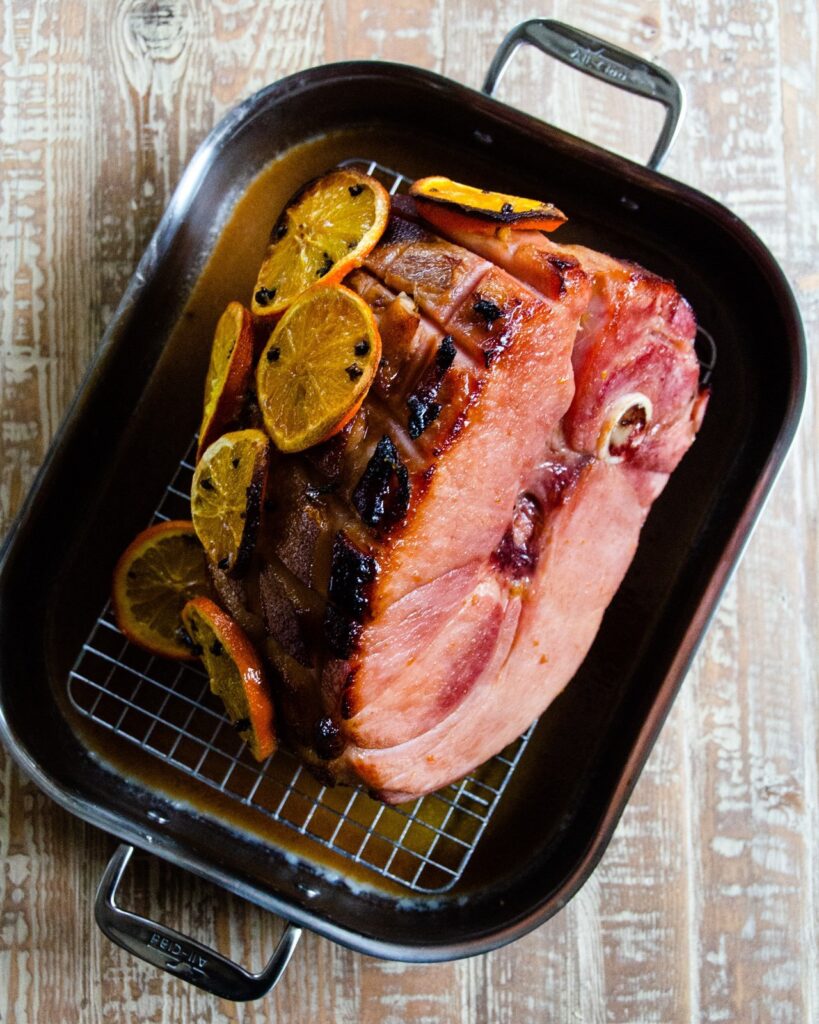
Once the ham has reached 140ºF, you can choose to broil it to caramelize the fat cap and any glaze you have poured on top. Otherwise, make sure you let the ham rest for 10 minutes before slicing and serving with the glaze in a sauceboat to pour over at the table.
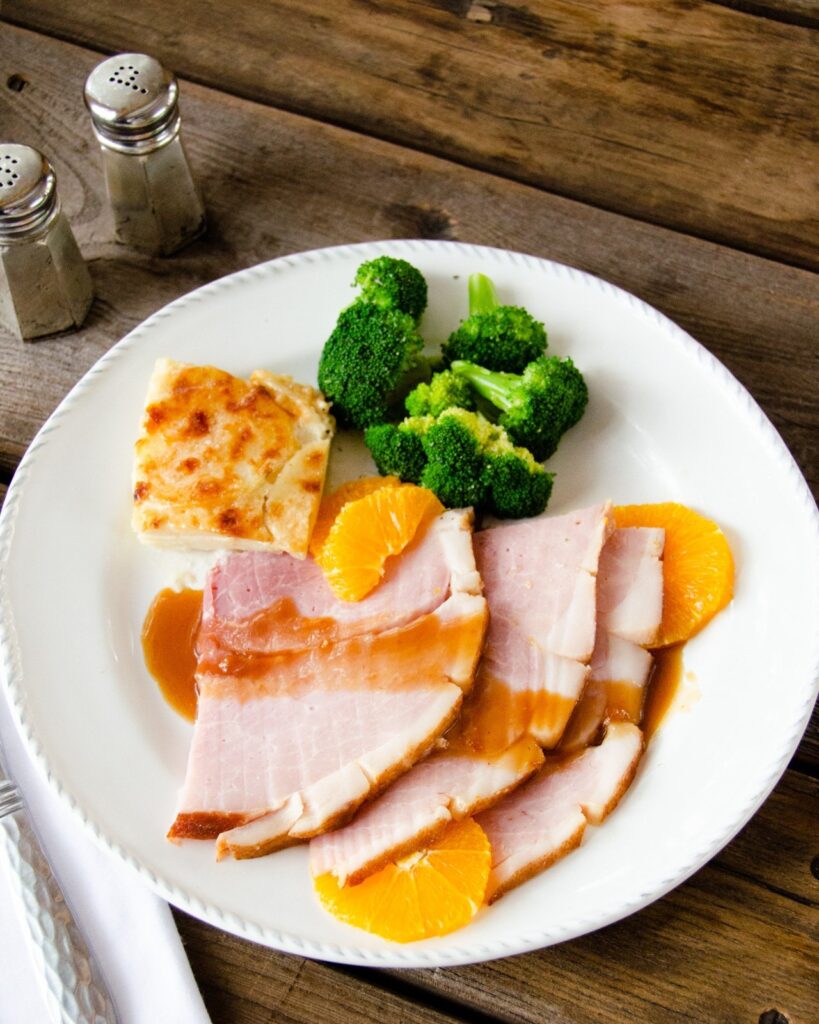
What to serve with Ham?
You’ll find some traditional potato dishes often served with ham. If mashed potatoes are your fancy, you’ll love these Cheddar garlic smashed potatoes. Or you might prefer the classic potato gratin. Any green vegetable is a perfect accompaniment to ham – asparagus, broccoli, green beans. A buttermilk biscuit or these lemon rosemary buttermilk biscuits would also be nice on the side.
What to do with Leftover Ham?
I’m glad you asked! There are SO many things you can do with leftover ham. One of my favorite recipes that uses leftover ham (and also one of the reasons I always make a bone-in ham) is split pea soup. I have a recipe for green split pea soup as well as French Canadian yellow split pea soup. Both are enhanced enormously with a roasted ham bone. Then there is anything to do with eggs Benedict with Hollandaise sauce, like my Eggs Benedict Bread Pudding. You’ll also make the best Monte Cristo sandwiches you’ve ever made using leftover baked ham and you can even turn it into Monte Cristo bread puddings too. Finally, breakfast is a perfect time to use up leftover ham – try a little ham stirred into your homemade cheesy grits.
Quick Notes:
- What is a ham?
- A ham is the rear leg of pork, from the shank to the rump, which is then cured (preserved with sugar, salt, nitrates and/or smoke).
- There are three types of ham:
- City ham is cured in saltwater and then smoked and fully cooked.
- Country ham is dry-rubbed and air-dried/cured for months, sometimes smoked and uncooked.
- Fresh ham is raw and should be cooked or cured at home
- There are two cuts of ham you can buy:
- Shank end – this cut is less tender, fattier and easier to carve with one single bone.
- Butt end (sirloin end) – this cut is more tender, less fat and harder to carve with the aitchbone still intact.
- You can find spiral cut hams or whole hams. Spiral cut hams are easier to carve, but are easier to dry out as well.
- How to pick a ham:
- Water content (less is better):
- “Ham” means no added water.
- “Ham with Natural Juices” means 7 – 8% of added water weight.
- “Ham, water added” means as much as 10% of the weight could be water.
- “Ham and Water Product” means any amount of water has been added
- Look at the color. A good ham should have an even rosy hue. A darker pink color means a muscular, free-ranging pig OR could mean heavier smoke flavor.
- Fat content. Fat streaks and marbling between muscles is a good sign.
- Smoke. Determine if the smoke in the product has come from a smoking process or if it is listed as an ingredient, meaning it is artificial flavor.
- Hormones. Look for pork that is free of hormones.
- Water content (less is better):
- Boneless versus Bone-in. Boneless hams have had the bone removed and then the meat is pressed together so that it’s easy to slice, but it’s not as flavorful.
- Serving size:
- ½ – ¾ pound per person for bone-in ham
- ½ pound or less per person for boneless ham.
- How to prepare:
- Score the fat on top of the ham. This allows the fat to render and results in a prettier presentation with crispier fat.
- Place the ham in roasting pan with glaze poured over the top and fruit nailed to the surface if desired.
- Re-heat the ham until it reaches 140ºF but doesn’t go over. Do this by:
- Baking in a 350ºF oven
- Pressure-cooking on high for about 25 minutes with a natural pressure release
- Slow-cooking for 8 to 10 hours with 1 cup of liquid
- Broil at the end, if desired
- Let the ham rest before slicing.
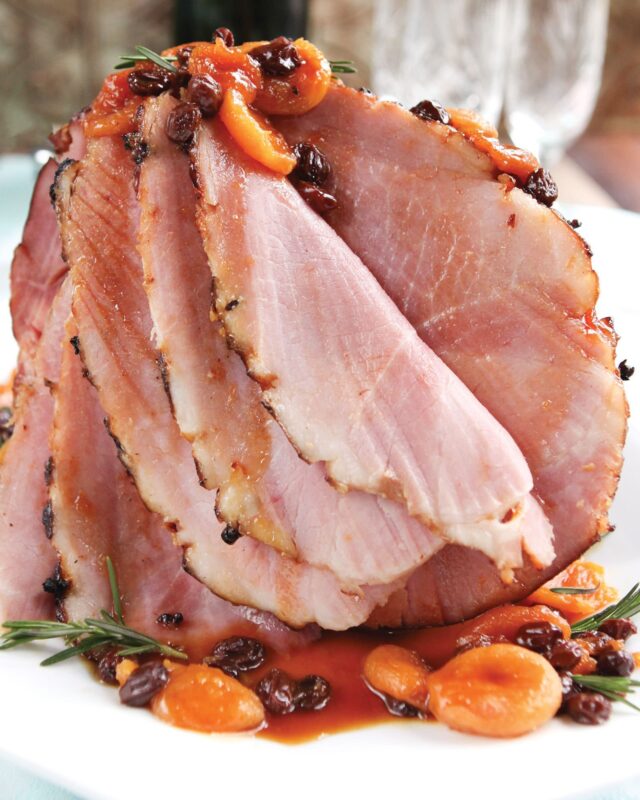
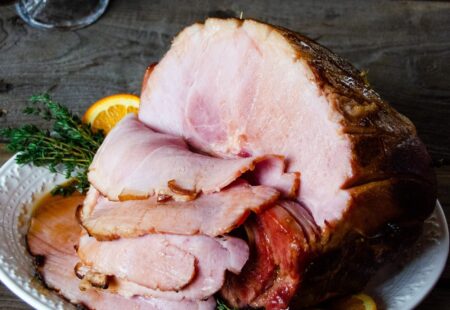
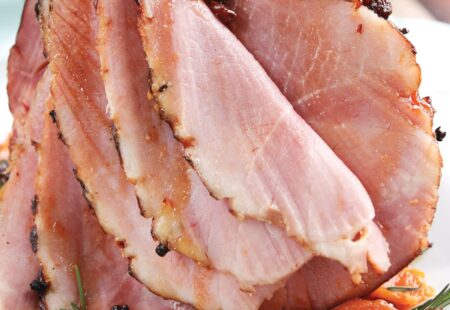
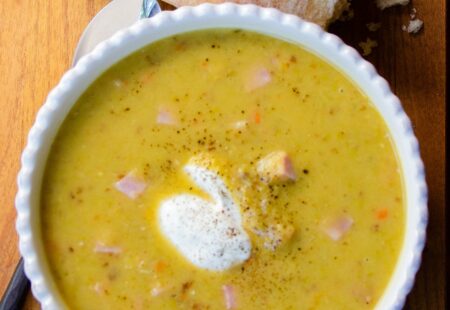

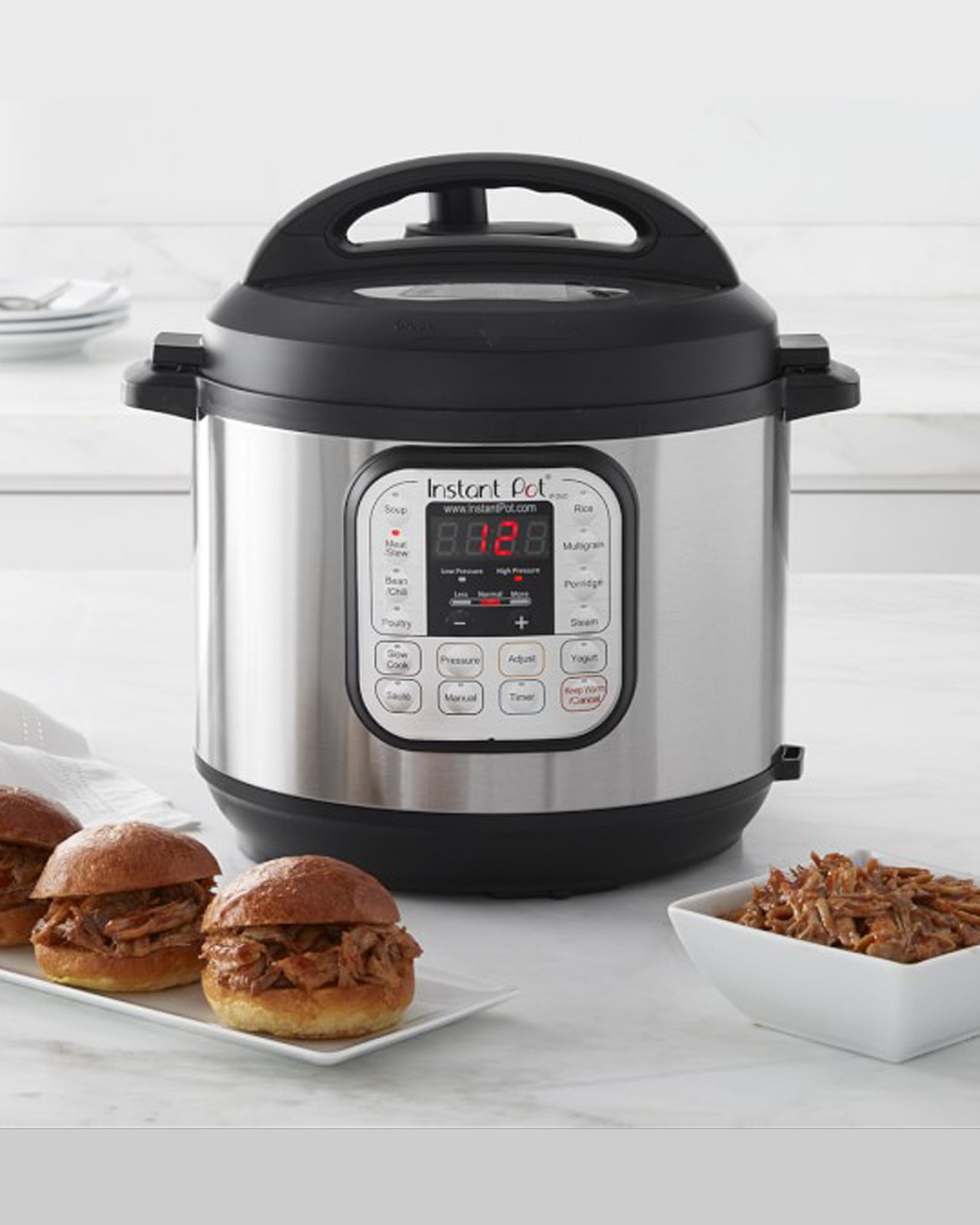
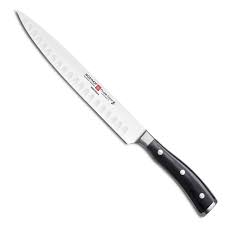
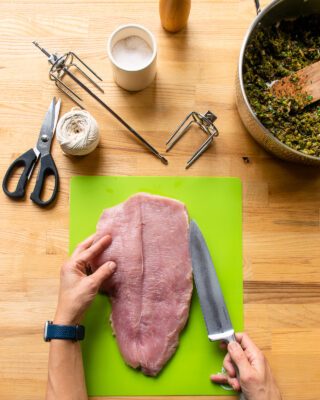
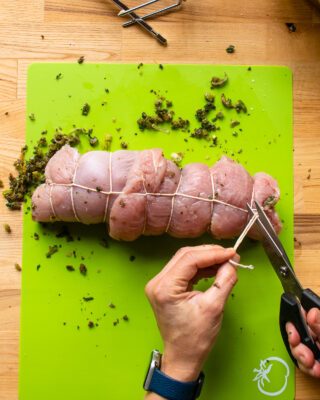
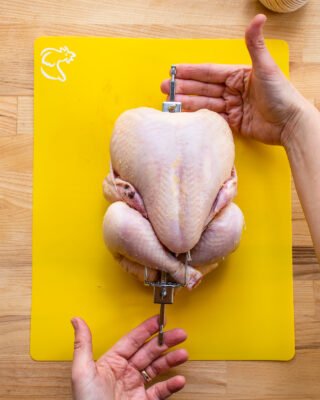
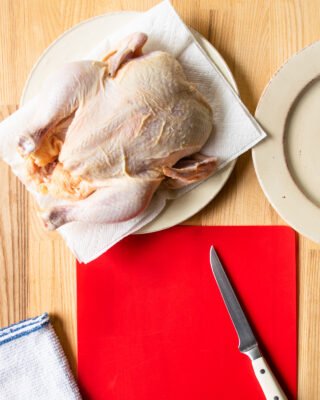
My dad always cooked a shank ham in water, then used that water to make bean soup.
Once
Ham
Is cooked how long will
It last in frig
Hi Doris. I would keep cooked ham for up to 5 days in the refrigerator. You could also cut the ham into manageable sized chunks and freeze it for another occasion. Wrap it very well and keep it frozen for up to 2 months.
Meredith, thank you so much for all the information about hams. I’ve never seen a video on how to slice the ham after it’s been cooked. Absolutely wonderful.
Thank you. Rita.
Should a ham that is spiral cut be cooked a shorter time to keep it from drying out?
You will want to cook a spiral ham for about 10 to 15 minutes per pound. Make sure you keep it covered in foil and have liquid in the pan to prevent it from drying out. Just put on your glaze and uncover the ham for about the last 15 to 20 minutes of the cooking time.
Hi Meredith: Do you have a particular brand of ham you like best? I am always trying to figure out which one to buy. I see so many in catalogs and all say theirs are the best but I am afraid to order. Please help.
I LOVE your recipes and videos—-
Carol Leon
Meredith does not have a particular brand of ham to suggest. She does prefer a country ham that is naturally smoked without smoke seasoning added. You can follow the guidelines Meredith has listed that explains the different types of ham to help make your decision on which to purchase.
Thank you for the video on how to cook and cut a ham. I always would cut the ham with the bone still in the ham, it look so much easier the way you did it.
Good morning And happy holidays. I was looking at your ham recipes. The glazes and there is Madeira wine. Do you have a recipe without the wine. Have so many little bottles of wine around that I bought for a recipe and I’ve never used that wine again and I like the way your recipe sounds but I don’t want to go to. The store burp and buy something that I’m not gonna use any suggestion.
It is a spiral ham.
Thank you God bless
Mary Volitich
You really can use any wine, stock, or orange juice instead of the Madeira wine. You can also freeze leftover wine in ice cube trays, containers or baggies to use in recipes or sauces as needed.